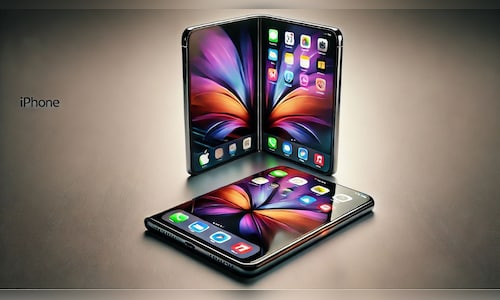Kuo indicates that numerous components, including the intricate hinge mechanism, are still being finalized. However, Samsung Display has already begun preparations for production lines to manufacture up to 8 million foldable panels annually, likely in anticipation of Apple’s 2026 launch.
Speculation about a 15-20 million unit order from Apple appears to indicate cumulative demand over a 2–3 year span, rather than just for the launch year. Initial shipments in 2026 might be limited to 3–5 million units, with consistent demand continuing into 2027 and 2028.
What to Expect: Design and features
The foldable iPhone is expected to feature a book-style design with a 7.8-inch inner display and a 5.5-inch external cover screen. It may include a titanium alloy chassis and a stainless steel-titanium hinge for enhanced durability.
Its thickness is anticipated to be 9-9.5mm when folded and 4.5–4.8mm when opened, similar to leaked specifications for Samsung’s upcoming Galaxy Z Fold7. Touch ID is rumored to return as a side-mounted sensor, substituting Face ID due to internal space limitations.
Apart from its foldable screen, Apple may market the device as its first AI-native iPhone. The larger display is expected to facilitate multitasking scenarios, such as planning a trip with a chatbot while simultaneously viewing a map in real-time.
Kuo has previously indicated that he expects a premium price range between $2,000 and $2,500 (approximately ₹1.74-2.17 lakh), but believes that loyal Apple customers will drive strong demand if the device aligns with the brand’s usual hardware and software standards.
Despite increasing chatter regarding the supply chain, Apple has not yet confirmed the existence of such a device. Nonetheless, speculation has heightened in recent months, and CEO Tim Cook fueled discussions last year during the company’s Q1FY25 earnings call in January. “I think there’s a lot more to come…I could not feel more optimistic about our product pipeline,” he stated.



